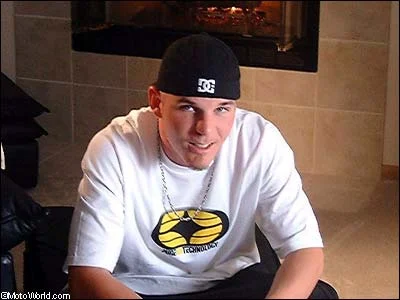 Granville Oral Roberts [2] was an American Pentecostal television evangelist and a Christian charismatic.
Granville Oral Roberts [2] was an American Pentecostal television evangelist and a Christian charismatic.(January 24, 1918 – December 15, 2009)
After finishing high school, Roberts studied for two years each at Oklahoma Baptist University and Phillips University. In 1938, he married a preacher's daughter, Evelyn Lutman Fahnestock.[4]
Roberts became a traveling faith healer after ending his college studies without a degree. According to a TIME Magazine profile of 1972, Roberts originally made a name for himself with a large mobile tent "that sat 3,000 on metal folding chairs" where "he shouted at petitioners who did not respond to his healing."[5]
Roberts was a pioneer televangelist (he began broadcasting his revivals by television in 1955)[6] and attracted a vast viewership.
In 1947, Roberts resigned his pastoral ministry with the Pentecostal Holiness Church to found Oral Roberts Evangelistic Association. He began conducting evangelistic and faith healing crusades, mainly in the U.S. He appeared as a guest speaker for hundreds of national and international meetings and conventions. Thousands of sick people would wait in line to stand before Oral Roberts so he could pray for them.
He founded Oral Roberts University in Tulsa, Oklahoma, in 1963, stating he was obeying a command from God. The university was chartered during 1963 and received its first students in 1965. Students were required to sign an honor code pledging not to drink, smoke, or engage in premarital sexual activities. Another part of the Oral Roberts Evangelistic Association is the Abundant Life Prayer Group.
In 1977 Roberts claimed to have had a vision from a 900-foot-tall Jesus who told him to build City of Faith Medical and Research Center and the hospital would be a success.[7][8][9]
In 1980, Roberts said he had a vision which encouraged him to continue the construction of his City of Faith Medical and Research Center in Oklahoma, which opened in 1981. At the time, it was among the largest health facilities of its kind in the world and was intended to merge prayer and medicine in the healing process. The City of Faith operated for only eight years before closing in late 1989. The Orthopedic Hospital of Oklahoma still operates on its premises. In 1983 Roberts said Jesus had appeared to him in person and commissioned him to find a cure for cancer.[10][11]
Roberts's fundraising was controversial. In January 1987, during a fundraising drive, Roberts announced to a television audience that unless he raised $8 million by that March, God would "call him home".[12][13] Some were fearful that he was referring to suicide given the passionate pleas and tears that accompanied his statement. He raised $9.1 million.[14] Later that year, he announced that God had raised the dead through Roberts' ministry.[15] Some of Roberts's fundraising letters were written by Gene Ewing, who heads a business writing donation letters for other evangelicals like Don Stewart and Robert Tilton.[16]
He stirred controversy when Time reported in 1987 that his son, Richard Roberts, claimed that he had seen his father raise a child from the dead.[17] That year, the Bloom County comic strip recast its character Bill the Cat as a satirized televangelist, "Fundamentally Oral Bill". In 1987 Time stated that he was "re-emphasizing faith healing and [is] reaching for his old-time constituency."[17] However, his income continued to decrease (from $88 million in 1980 to $55 million in 1986, according to the Tulsa Tribune) and his largely vacant City of Faith Medical Center continued to lose money.[17]
Harry McNevin said that in 1988 the ORU Board of Regents "rubber-stamped" the "use of millions in endowment money to buy a Beverly Hills property so that Oral Roberts could have a West Coast office and house."[18] In addition he said a country club membership was purchased for the Robertses' home. The lavish expenses led to McNevin's resignation from the Board.
Richard Roberts resigned from the presidency of ORU on November 23, 2007, after being named as a defendant in a lawsuit alleging improper use of university funds for political and personal purposes and improper use of university resources.[19][20] The university was given a donation of $8 million by entrepreneur Mart Green, and although the lawsuit is still in process, the school has submitted to an outside audit, and with a good report will be given an additional $62 million by Green. [21] Oral Roberts announced he would return to help fulfill this administrative role along with Billy Joe Daugherty, who was named as the executive regent to assume administrative responsibilities of the Office of the President by the ORU Board of Regents.[22]
Roberts's daughter, Rebecca Nash, died in an airplane crash on February 11, 1977, with her husband, businessman Marshall Nash.[23] Roberts's eldest son, Ronald, committed suicide in June 1982, five months after receiving a court order to get counseling at a drug treatment center.[24] Two other children of Roberts are living: son Richard, a well-known evangelist and former president of Oral Roberts University (ORU), and daughter Roberta Potts, a lawyer.
On May 4, 2005 Evelyn, Roberts's wife of 66 years, died in a Southern California hospital at the age of 88.[25]
 Roberts died on December 15, 2009[26] at the age of 91. He had been "semi-retired" living in Newport Beach, California.[27]
Roberts died on December 15, 2009[26] at the age of 91. He had been "semi-retired" living in Newport Beach, California.[27]
To see more stars that died click here















